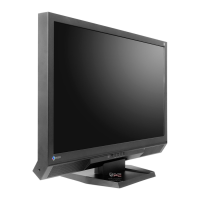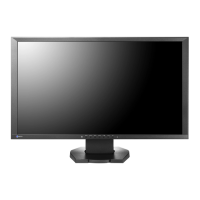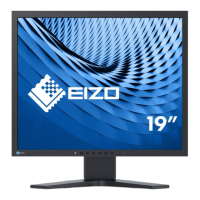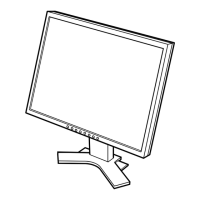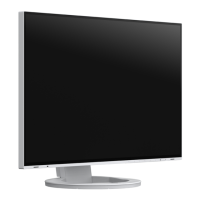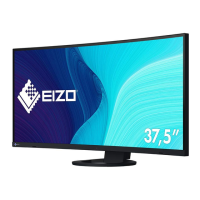43
Chapter 7 Troubleshooting
7-2. Imaging problems
Problem Possible cause and remedy
1. The screen is too bright or too dark. • Use “Brightness” or “Contrast” in the Setting menu to
adjust it (see “To perform advanced adjustments” (page
17)). (The LCD monitor backlight has a limited life
span. When the screen becomes dark or begins to icker,
contact your local EIZO representative.)
• If the screen is too bright, turn on Auto EcoView and
EcoView Optimizer (see “5-3. Enabling/Disabling
Automatic Brightness Adjustment “Auto EcoView”” (page
37), “5-4. Reducing Glare “EcoView Optimizer”” (page
38)). The monitor detects the environmental brightness
to adjust the screen brightness automatically.
2. Characters are blurred. • Check whether the PC is congured to meet the resolution
and vertical scan frequency requirements of the monitor
(see “2-1. Compatible Resolutions/Formats” (page 14)).
• Use “Smoothing” in the Setting menu to adjust it (see “To
modify blurred characters/lines” (page 26)).
3. Afterimages appear. • Afterimages are particular to LCD monitors. Avoid
displaying the same image for a long time.
• Use the screen saver or power save function to avoid
displaying the same image for extended periods of time.
4. Green/red/blue/white dots or defective
dots remain on the screen.
• This is due to LCD panel characteristics and is not a
failure.
5. Interference patterns or pressure marks
remain on the screen.
• Leave the monitor with a white or black screen. The
symptom may disappear.
6. Noise appears on the screen. • In the Setting menu, set “Overdrive” to “Off” (see “To set
overdrive intensity” (page 22)).
• When entering the HDCP signals, the normal images may
not be displayed immediately.
7. The screen is whitish or blackish. • Use “Black Level” (see “Adjusting the brightness and color
of black “Black Level”” (page 18)), and “Contrast” (see
“To adjust contrast” (page 18)) in the Setting menu to
adjust it.
8. The color shown on the display is not
correct (for HDMI input).
• Change the color space of the video signal in “Screen” –
“Color Space” under the Setting menu.(see “2-4. Setting
the Color Space for the HDMI input signal” (page 23))
9. Thescreenashes(forHDMIinput). • Transmittable signals differ on the category of the HDMI
cable. Check whether the cable support High Speed.
10. The screen is whitish or blackish (for HDMI
input).
• Use “Screen” – “Color Space” under the Setting menu to
adjust it.(see “2-4. Setting the Color Space for the HDMI
input signal” (page 23))
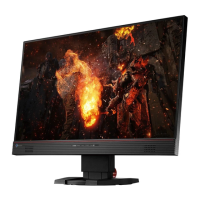
